Types of Retail Marketing: Definition, Methods, and Examples
When you’re operating a business, your target audience will interact with you through various means. They might visit you physically the first time and place an order on your website the second. This is why owners invest in different types of retail marketing instead of relying on just one.
Even if you don’t have an online store yet, people will expect you to at least be active on social media. They’ll want to see your updates and interact with you before visiting your store to purchase.
Besides, having a strong presence on all fronts builds brand awareness, consistency, and trust. That’s all a part of retail marketing.
So, if you want to learn where to invest your money and efforts, you’ve come to the right place.
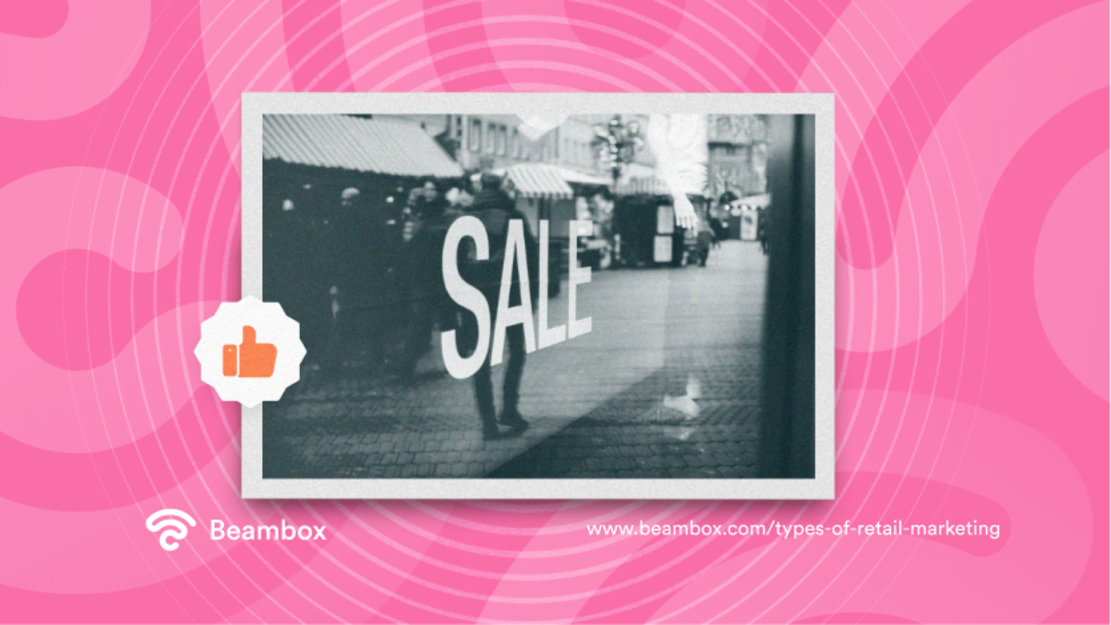
Let’s Start From the Basics: What Is Retail Marketing?
Before we tackle the types of retail marketing, let’s understand its basics first. Retail marketing is when you spread awareness about your product and generate sales for it. Consider it part of your retail operations. But why is it such a big deal when you can just print brochures and distribute them to homes?
Well, as mentioned earlier, your customer audience is in different places. Plus, not everyone wants to see the same types of ads.
Some people, especially the older generations, will want more traditional promotions. In contrast, the modern community will search for you on social media or Google to find your reviews.
Then there’s also a group of people who examine everything from TV ads to Instagram highlights before making a decision. That’s why you can’t simply invest in a single area of marketing and call it a day.
But there are some elements you must know before you start advertising your retail business.
These are the 4Ps of retail marketing: product, price, place, and promotion. Let’s discuss them in detail.
Firstly, you must have a product ready. What would you even sell without this step?
The second is price, which can make or break the promotion depending on who you’re pitching to. Therefore, you must research your customer profile’s budget, competitors, and government regulations to set your pricing strategy.
Then, you must tell your audience where they can find the product. People should know whether you’re selling it in your store, online, or in third-party stores.
And lastly, you must decide how you’ll promote your product. What would you include in the ad to encourage customers to buy from you? When you have these four things sorted out, you’re ready to start promoting.
What Are the Different Types of Retail Marketing?
Studies have revealed that 73% of retail consumers prefer to use a mix of different channels.
They won’t just see a single ad and leap to make a purchase. They will spend a good amount of time researching your store. They will make comparisons and judge your reputation before buying from you.
During this extensive journey, you must use different marketing strategies to guide your decisions. But how will you do that if you stick to just one channel? So, here are the five types of retail marketing that you should invest in.
Remember, however, to track your results using proper retail metrics that tell you what is working.
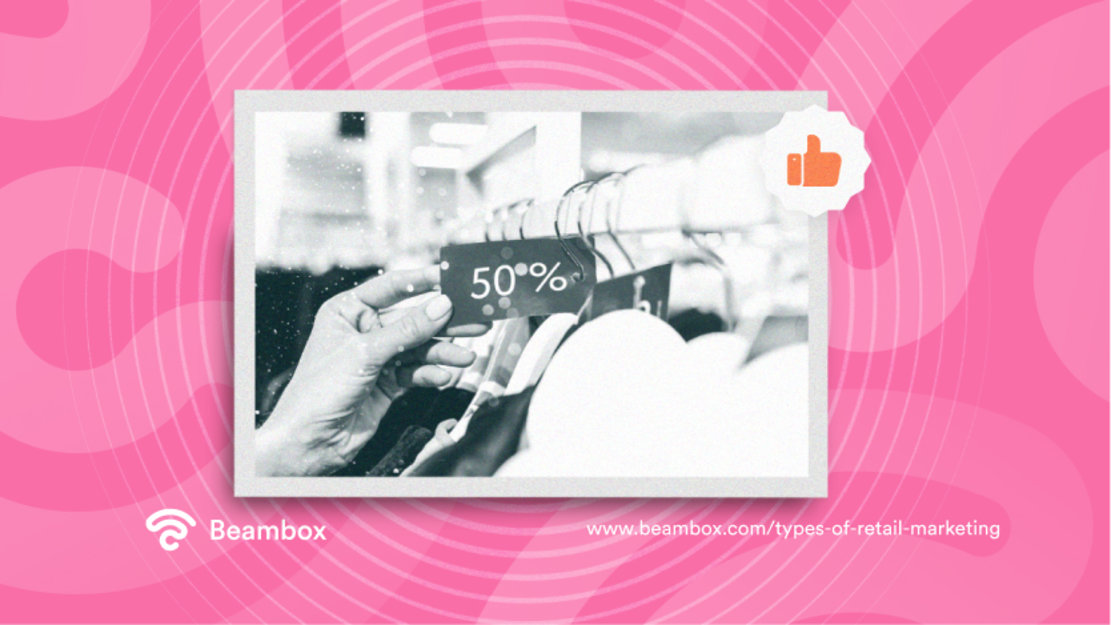
The One You Use in Your Physical Stores
Displaying promotional material inside stores is one of the most common practices among retailers. When customers enter the venue, discounts and promotional activities entice them to buy more things and increase the dwell time. Here are some examples of store marketing.
Firstly, you can create a pack of products to sell at a discounted price. The items in the pack should complement each other.
For example, suppose you own a clothing store. You have a lot of options here, such as creating a pack of three shirts. Or give a free head accessory with each purchase.
Secondly, host competitions and games in your store. This doesn’t have to be expensive. A simple board game will do the trick. Decide on prizes for the winners and see your sales increase dramatically. But don’t forget to put signs about this game so people can know what to expect.
Thirdly, you can display your products and ads on digital signage. It’s a great way to share updates about your brand. Plus, you can make it interactive to engage customers and enhance their shopping experience.
Lastly, consider giving out free samples of your products. This is already quite common with cosmetics stores such as The Body Shop.
But you don’t have to be a big name in the market to take advantage of sampling. When people test your products and like what you offer, they’ll be more willing to make a purchase.
The One That Gets the Word Out to the Masses
No matter how advanced the world gets, traditional retail marketing is never going to die.
There’s still a majority of people who prefer to see ads in TV, newspapers, and all the traditional means. That’s because they trust these sources. Therefore, you can’t ignore this type of marketing.
Besides, it’s a convenient way of getting the word out to the masses. Many people will watch your ad, and even if half of them convert, your investment will be worth it. On social media platforms, your ads are at the mercy of algorithms.
There’s no guarantee that your target audience will see your promotions unless you’re paying for them, of course.
But with traditional marketing, nobody misses a huge billboard or a brochure in their driveway. So, here’s how to use this type of retail marketing.
Start by printing pamphlets and distributing them to people who pass by your store. Also, keep them handy at the store itself so you can promote them to visitors.
Moreover, invest in signage and billboards because they’re still one of the best ways to catch lots of eyes. But here, your ad should be worth reading, so make sure your content and offerings are good enough.
Then you have the option of radio and TV ads. Sending direct mail is also a part of traditional marketing.
Now, while this type of marketing is more expensive than others, it brings a huge return.
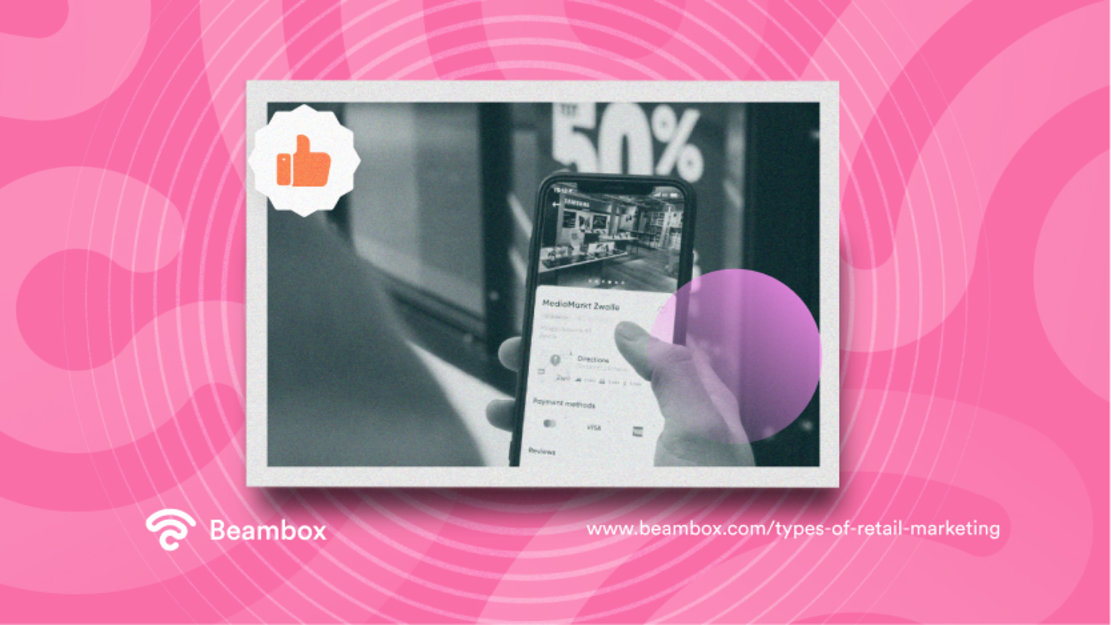
The One That Uses Digital Means
A discussion about retail promotions can never be complete without mentioning the various types of digital marketing campaigns. Posting content on social media platforms and displaying ads to reach a broader audience is all part of it.
Moreover, you must engage with your customers and build a community there. Believe it or not, that does more marketing than ads.
You can also host social media contests, loyalty programs, and giveaways. Doing this will get your product out to people and encourage them to buy it themselves.
Additionally, you can create Facebook and Instagram shops to let people place orders there.
But digital marketing doesn’t end on social media. You can also engage in email marketing for retail, which lets you send personalized offers directly to your customers’ inboxes.
This increases their chance of seeing the ad and acting upon the promotion. But if your email doesn’t catch their attention, it won’t be of any use.
Create quality pictures and videos of your product, and remember to be transparent. Potential customers want to relate with brands, and telling them your story through digital means is the best way.
However, don’t send emails without segmenting your customers. This way, you’ll be able to know what each group likes and send them suggestions that match their taste. The result? Your sales will be up in no time.
Lastly, don’t forget SEO, which can make your website more visible in search results. You can also invest in Google Ads since many customers search for brands there.
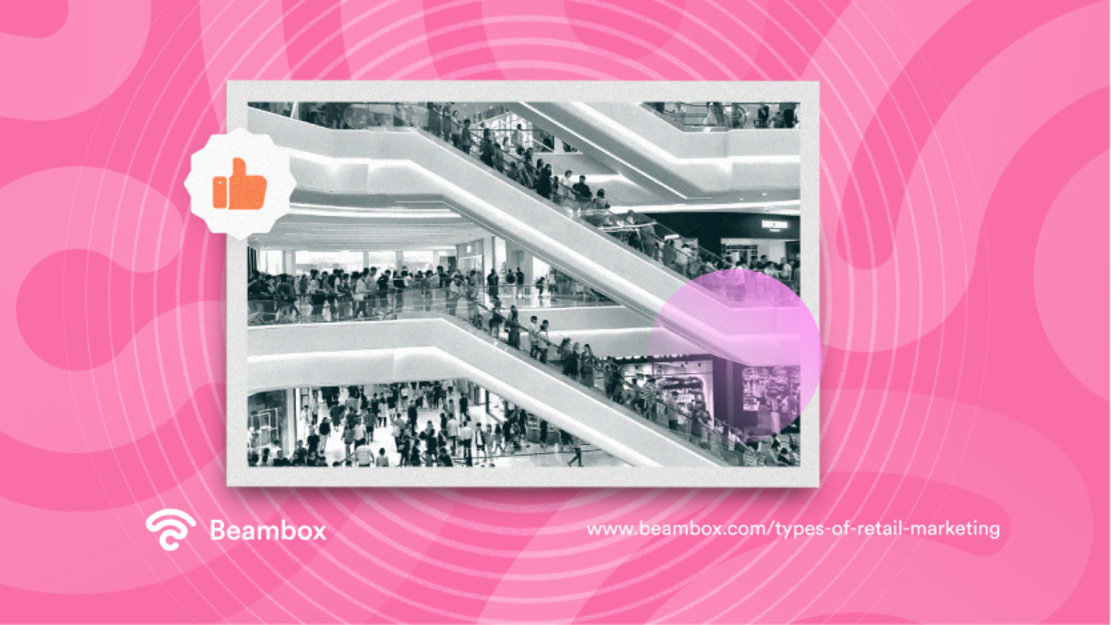
The One That Uses Unconventional Methods
If traditional marketing and social media seem like too much of an investment, you can invest in guerrilla marketing. It is more economical and uses creative ideas to promote products. The main part here is the element of surprise.
You can also think of it as a publicity stunt since it uses inventive ways rather than conventional ads. When people find these ads, they share their wonder with other people, and that serves as word of mouth.
Let’s discuss a few options to implement guerrilla marketing.
- Mascots: Creating a unique character to hand out advertisements is one of the oldest and most common guerilla marketing techniques.
- Outdoor Guerilla Marketing: Another idea is to place something extraordinary in public, outdoor settings. Bounty achieved this with perfect accuracy in its “Big Skills” campaign. It displayed a giant melting popsicle on the sidewalk with a sign advertising their paper towels. The ad promoted the towels’ absorbing qualities.
- Indoor Guerilla Marketing: As the name suggests, here, you place creative materials in closed spaces such as department stores. However, you have to be careful in this setting. Ask for permission and follow all the regulations.
- Event Ambush: This is where you interrupt a public event, such as concerts, festivals, etc., to promote your product. Sometimes, businesses don’t ask for permission for these stunts. If you’re planning on taking this route, make sure the event organizers have an open mind and won’t get angry. Don’t interrupt professional settings, though.
- Experiential Guerilla Marketing: This one can occur in any setting and involves the public. Coca-Cola is the perfect example of this. They displayed a vending machine in a university that said, “Hug me.” The stunt was that the machine only accepted hugs as currency. This surprised students and encouraged them to try for themselves.
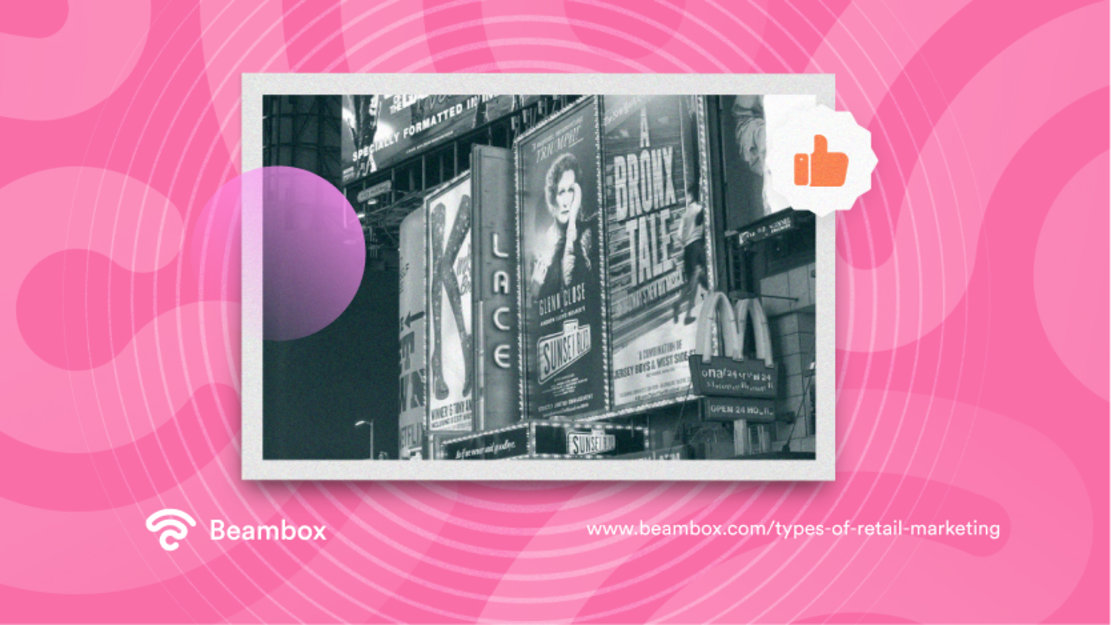
The One Where Others Promote Your Products
The last one is influencer marketing, where you involve people with a lot of followers to promote your products. This type of retail marketing works quite nicely because the people who follow these influencers trust them.
When they recommend your product on their profile, it will serve as a witness that it’s worth the money. Hence, more people will start buying from you. Here’s how to create an influencer retail marketing strategy.
Start by researching people who promote the types of products you sell. For example, if you sell home decoration items, choose an influencer whose profile focuses on these things.
This is very important because there’s a chance they’ll reject your proposal, and you’ll have to research all over again.
Plus, their followers won’t trust that particular promotion since it would be out of the blue. Moreover, don’t just go for influencers with a large number of followers. Look for the ones who are able to make sales for brands.
Once you have a list of related influencers, send them a message suggesting a collaboration. Give them the details of your product and offer an incentive.
Now, you don’t always have to give money as an incentive. You might opt for giving them a discount offer instead. For example, give them a 20% discount whenever they make a purchase. But it’s a good idea to make it clear that you’ll only incentivize if they’re able to make sales.
However, don’t bribe them to give the wrong details about your products and misguide their followers. This will not only be bad for your reputation and sales, but it will also be bad for them.
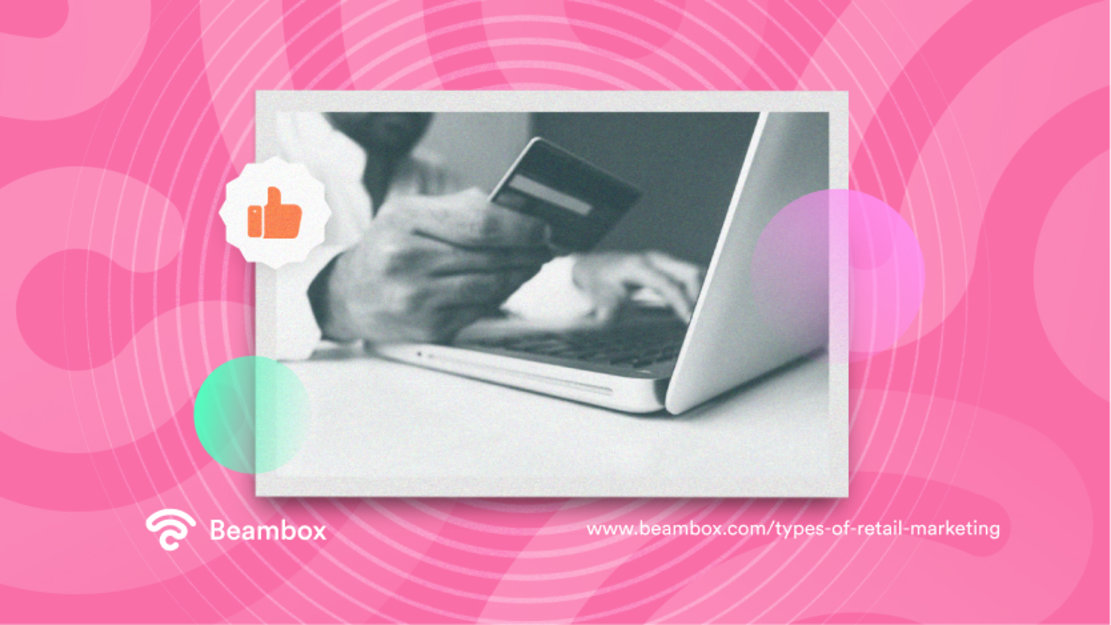
Take Your Retail Marketing to the Next Level With These Best Practices
Retail marketing isn’t hard, but it isn’t just about displaying a few billboards and signages either. People should know, feel, and trust your brand.
That won’t be possible without investing in various types of retail marketing. A combination of traditional marketing, digital marketing, influencer marketing, guerilla marketing, and in-store marketing is the way to go!
If you want to gather data about your customers to implement effective marketing strategies, try out Beambox. This WiFi marketing platform helps you automate campaigns and manage your online reputation. Moreover, data will become simple and insightful reports that you can use in your marketing initiatives.
Beambox does not require additional hardware and has no hidden fees. Join other 12,000 venues that are using Beambox WiFi marketing to scale their growth. Start your trial now!
Get Started With Free WiFi Marketing
Beambox helps businesses like yours grow with data capture, marketing automation and reputation management.
Sign up for 30 days free


